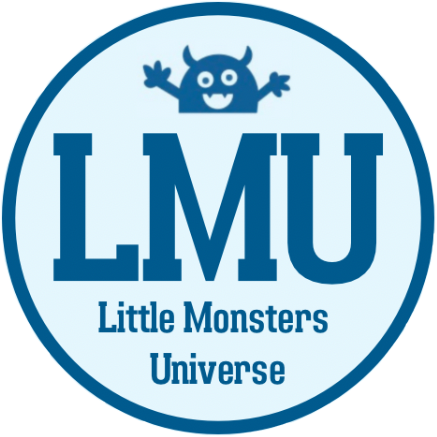Creating a homeschool science curriculum for elementary students involves several key steps, from identifying your educational goals to choosing engaging activities and resources. Here’s a comprehensive guide to help you build an effective and fun science curriculum:
Set Educational Goals
Determine what you want your children to achieve by the end of the year. Goals could include:
- Understanding basic scientific concepts
- Developing critical thinking skills
- Fostering a curiosity about the natural world
Example Goals for My Children
For the upcoming year, our goal is for my 5-year-old to develop strong observational skills, ask questions about the natural world, and engage in hands-on exploration to foster curiosity and a love of nature. For my 7-year-old, the focus will be on developing hypotheses, conducting simple experiments to test these hypotheses, and documenting and communicating findings. Both children will keep nature journals and participate in seasonal projects to understand the interconnectedness of different scientific concepts.
Choose a Science Framework
Select a science framework or standards to guide your curriculum. The Next Generation Science Standards (NGSS) is a popular choice in the U.S. You can also use state standards or create your own.
Identify Key Topics
Decide on the key topics you want to cover, understanding that many branches of science are interconnected. For elementary students, consider including:
- Life Science – Plants, animals, human body, ecosystems
- Earth Science – Weather, rocks and minerals, solar system
- Physical Science – Matter, energy, forces, motion
- Environmental Science – Conservation, recycling, natural resources
Plan a Yearly Outline
Break down the school year into units, focusing on different branches of science while keeping their interconnectedness in mind. Here are two approaches you might consider:
Option 1: Focus on One Main Branch Topic per Year
Spend the entire year focusing on a primary branch of science, such as Life Science, while integrating concepts from Earth Science, Physical Science, and Environmental Science throughout the lessons.
Option 2: Break the Year into Trimesters or Quarters
Divide the school year into three or four sections, each focusing on a different branch of science. This approach provides a broad overview of various scientific fields and shows how they interrelate.
Need help finding the right homeschool lessons for your child? Visit LMU’s Finding the Right Plan page to discover science-based lesson plans and discounted bundle packs designed to meet diverse learning needs.
Example: Kindergarten Year Outline
When planning my children’s kindergarten year, I broke it into three units to emphasize different branches of science while highlighting their connections. We started with weather (Earth Science), where we spent mornings observing and recording daily weather in a journal and conducting simple experiments like creating clouds in a jar. We also discussed how weather affects plants and animals, seamlessly integrating Life Science.
Next, we moved to force and motion (Physical Science). The kids loved playing with toy cars to explore how different surfaces affected movement. We built simple machines using household items, and even tied in our previous weather lessons by observing how wind can create force and motion.
For the last unit, we focused on life on the farm (Life Science). We planted seeds and observed their growth, learned about various farm animals, and discussed how weather and forces, such as water flow for irrigation, impact farming.
Throughout these units, we embedded Environmental Science by discussing conservation practices, like saving water during the weather unit, exploring recycling in farming, and making connections about how forces, motion, and weather impact the environment.
By considering the interconnectedness of scientific concepts, you can foster a holistic understanding of the natural world, ensuring that your children not only learn about different branches of science but also see how they relate to one another.
Gather Resources
Collect non-fiction books, living science books, online resources, and hands-on materials to make learning engaging and effective. Here are some quality resources to consider:
Books
- Usborne nonfiction science books
- Living science books such as “The Brilliant Deep” by Kate Messner and “Squirrel’s Family Tree” by Beth Ferry
Websites
Kits
- National Geographic science kits
- Thames & Kosmos kits
- Learning Resources starter kits for younger learners
Plan Weekly Lessons
Create weekly lesson plans, incorporating various teaching methods. Include a mix of:
- Reading and discussions
- Experiments and hands-on activities
- Videos and multimedia resources
- Field trips and nature walks (Top 10 Virtual Field Trips)
Recognize that children learn in different ways; use a mix of visual, auditory, and kinesthetic activities to reach all learners. For instance, combine reading with hands-on experiments, incorporate educational videos, and schedule nature walks to cater to various learning preferences.
Integrate Cross-Disciplinary Activities
Combine science with other subjects such as math, language arts, and art. For instance:
- Math – Measure and record data from experiments
- Language Arts – Write reports or stories about scientific discoveries
- Art – Draw diagrams or create models
Check out my blog article “The Power of STREAM: How Science, Technology, Reading, Engineering, Art, and Math are Revolutionizing Education” for more insights into integrating these subjects seamlessly in education.
Include Assessments
When assessing children’s understanding and progress in a homeschool science curriculum, it’s beneficial to use a variety of methods that align with their learning experiences. Here are effective assessment strategies:
- Project Presentations
- Lab Reports
- Observation Checklists
- Hands-on Activities (This can include building models, conducting simulations, or solving practical problems related to science topics.)
- Discussions and Reflections
Encourage Exploration and Curiosity
Allow students to pursue their interests within the framework of the curriculum. If a child shows a particular interest in a topic like astronomy, provide additional resources and activities to explore that interest further.
FAQs
- How do I build a homeschool science curriculum?
To build a homeschool science curriculum, start by setting educational goals, choosing a science framework, selecting key topics, and planning a yearly outline. Gather engaging resources such as books, websites, and kits, then plan weekly lessons with a mix of reading, activities, and hands-on experiments. - How do I structure the year for a homeschool science curriculum?
You can structure the year by focusing on one main branch of science, or break it into trimesters or quarters, each highlighting a different scientific field. This allows for both in-depth and broad exposure to various scientific concepts. - What are some key topics to cover in an elementary homeschool science curriculum?
Key topics for elementary students include Life Science (plants, animals, ecosystems), Earth Science (weather, rocks, solar system), Physical Science (matter, energy, forces), and Environmental Science (conservation, natural resources). - How can I incorporate cross-disciplinary activities in my homeschool science curriculum?
Integrate subjects like math (measuring data), language arts (writing reports), and art (creating models or drawings) with science lessons to help reinforce and deepen understanding. - How do I assess my child’s progress in a homeschool science curriculum?
Use various assessment methods, such as project presentations, lab reports, observation checklists, hands-on activities, and discussions to track progress and ensure learning outcomes are met.
If you’re looking for engaging science lessons for your homeschool, explore our downloadable units and lesson plans, designed to spark curiosity and fit your child’s interests. You can also work directly with LMU to create custom lessons and units tailored to your child’s unique needs. Plus, don’t forget to check out our brand-new Nature Journal and Handbook – perfect for inspiring exploration of the natural world.




